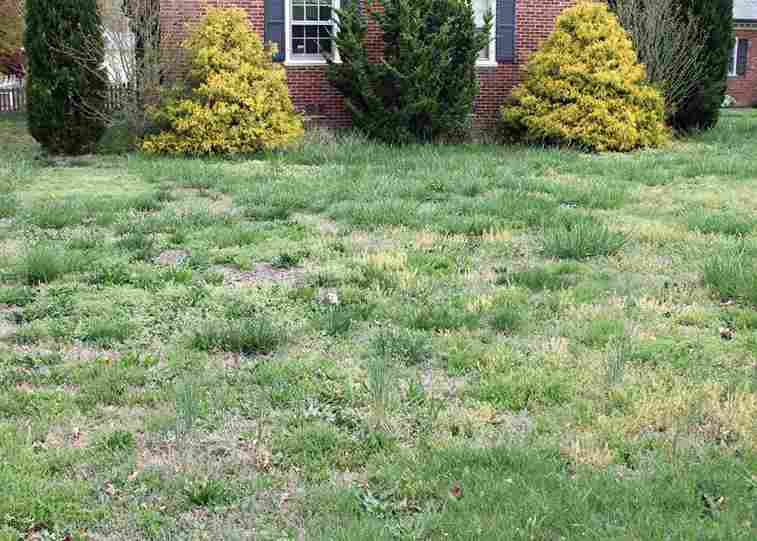Weeds are a natural part of the landscape and can provide benefits to both humans and plants. However, there are many ways to control weeds, both during the growth process and once they have reached a certain size. Understanding how to control weeds is essential for anyone wishing to manage their property in a healthy way.
Weeds are a common sight on many farms and gardens, but it’s important to know how to control them. Weeds are difficult to remove and can cause many problems for farmers and gardeners.
Here are 5 reasons why weeds grow and how to control them:
- Weeds compete with other plants for resources.
- Weeds have the ability to reproduce quickly and can out-compete other plants.
- Weeds are difficult to control – they create a major repository of nutrients and water for pests and diseases.
- Weeds compete for space with other plants. When weeds become established, they take up more space than other plants. This can lead to problems such as overgrowth, tangled vines, and loss of water potential.
- Weeds have a strong rooting ability and can spread through the soil quickly and can spoil other plants nearby
Why do weeds grow?
Weeds are opportunistic, meaning they grow when conditions are favorable, such as specific temperatures, lawn moisture levels, and bare or thin turf areas, and they can even grow in cracks in roads, sidewalks, or driveways. Weeds can grow almost anywhere there is space.
Weed seeds are plentiful and come from a variety of sources, and they can lay dormant in the soil for years before germinating. Weeds produce thousands of seeds per plant while actively growing and dispersing them throughout the season.
Some weeds, such as dandelions, spread with the help of the wind. Weeds can also be found in poor-quality grass seed purchased at a store and soil brought in for new plantings.
Weed classifications
Every lawn and landscape bed contains three types of weeds. All are controllable; however, some are easier to control than others.
- Annual weeds: These weeds spread by laying seed, germinating and growing for one season, and then dying on their own at the end of their life cycle. Hairy bittercress, oxalis, groundsel, and chickweed are examples.
- Bi-Annual Weeds: Biennial weeds live for two years. A seed germinates and grows into a leafy plant in the first year. The plant flowers the following year, producing seeds that restart the plant’s life cycle. Clover, wild carrot, and prickly lettuce are examples.
- Perennial Weeds: Weeds that grow indefinitely. These weeds live for several seasons and spread by seeding and/or through their root system. Dandelion, thistle, and ground ivy are examples.
How to Get Rid of Weeds on the Lawn
There are numerous methods for controlling or reducing weeds on a lawn. Preventative pre-emergent control is one option; however, there is currently no single product that covers the entire spectrum of broadleaf weeds. When controlling weeds in a lawn or landscape, post-emergent herbicides are most commonly used.
Another method for controlling weeds in a lawn is to use selective herbicides. The most commonly used selective herbicides work by interfering with chemical processes within the weeds. The herbicide imitates a naturally occurring plant chemical that promotes uncontrollable growth. Weeds grow faster than plants can handle and die as a result.
Other selective herbicides target photosynthesis, the process by which plants generate energy/food from sunlight. By preventing photosynthesis, the weed is effectively starved to death.
Non-selective herbicides that target enzymes in plant cells are also available. The herbicide disrupts the chemical reaction sequence and produces toxic compounds within the plant, causing it to die. The chemical glyphosate, also known as “Round-Up,” is a non-selective herbicide. Non-selective herbicides kill all foliage that has been sprayed. This product should be used with caution in order to avoid harming desirable turf species, ornamental plants, and grasses.
How do naturally get rid of weeds on the lawn?
Hand-picking weeds out of your lawn is a natural way to get rid of them. This is an effective way to control a small number of weeds on smaller lawns and mulch beds. You can help reduce the number of weeds that regrow by picking annual weeds before they flower and produce seed.
5 Best Natural Weed Removing tools
Also Read: Can Snakes Bite Underwater?
Keep in mind that weeds have underground roots, so hand-pulling tears off the top foliage leave the plant’s roots behind, which can then regrow the plant. To be successful, you must remove all of the roots, which is a difficult task.
Steps for a weed-free lawn.
Following these simple steps will help your lawn to be as healthy as possible.
Cultural Practices also play a Key Role in Creating a More Weed-Free Lawn A weed-free lawn is not only important for the health of your lawn, but it can also look after to maintain the beauty of your home. There are a number of ways to keep your lawn clean and free of weeds, and following these simple steps can help:
- Use a chemical-free pesticide when necessary. Pesticides are often applied with seeded rugs or mowing blades, so it’s important to read labels carefully before using them. Some products use an electronic contactor that warns you when plants have been disturbed – this will be different on every property! A chemical-free option may be more effective if there are problems with other plant species growing nearby.
- Maintain a healthy turfgrass mix: Maintaining a healthy turfgrass mix is critical for your lawn’s health. This is due to the fact that the grasses and other plants in a healthy lawn contribute to the overall atmosphere of the lawn, which in turn helps keep pests, diseases, and other elements out.
- Maintain a consistent watering schedule. Watering your lawn twice a week is a good rule of thumb, but you can adjust this depending on your climate and needs.
- Add fertilizer every time you water. Fertilize with dwarf plant food or an ammonium Sulphate solution to help ensure that your turfgrass mix remains healthy and ready for growth next season.
- Avoid using chemical products on your lawn – these can damage delicate turfgrass cells, leading to disease or pest outbreaks!
Conclusion
In conclusion, weeds are a type of plant that can enter your lawn from multiple sources, including garden plants, wildflowers, and even trees. By understanding the different sources that they come from, you can better manage your weed problem and keep your lawn looking its best.














